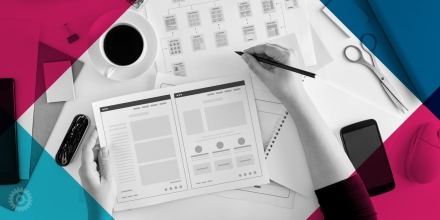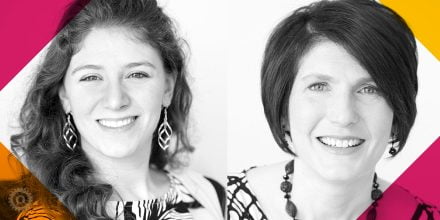
Earlier this year, I moderated a panel session for the BSA, where senior marketers from three A/E/C firms shared their insights on the website redesign processes they managed. I’ve woven together their observations, tips and cautions into the following article. I sincerely thank them for their participation. (You can also watch the full recording by clicking the video link at the end.)
Our Panelists
Sean Brennan is a registered architect who works on building projects, as well as marketing and business development for LPA|A (Lamoureux Pagano Associates), a nationally recognized architecture firm known for its work with corporate, educational, civic and library clients.
Amanda Alcamo was the digital marketing manager at Acentech, a firm that is particularly well known for its work in acoustics, audiovisual design and noise control. Amanda was spearheading the website redesign project at Acentech at the time of the panel.
Cassandra Thompson is a designer with marketing expertise as well as a BFA in Architecture, and works for Environmental Partners, an engineering firm that works on complex projects in waste, wastewater and other environmental areas.
Their Website Case Stories:
LPA|A
Acentech
Environmental Partners
Here are some of the many thoughts provided during the session:
Set a budget
Our participants did not include a budget in the RFP process, and regretted it later. A budget lets responding agencies set reasonable expectations for the scope of the work and helps you prioritize where you want to spend or save money. With no set budget, you may receive RFP responses that don’t match your needs and goals.
Create a team
There are many moving parts in site redesign, too much for any one individual to manage. Bring together a team from within the company to set priorities, oversee the RFP, provide content input and offer feedback through the entire process. A mix of management, marketing professionals and architects and engineers is ideal. Of course there will be differences of opinion at times, so determine how final decisions will be made. Designate one point of contact for interactions with the agency, but distribute other tasks across the team.
Understand practical timeframes
Launching a new site may seem simple until all the work begins. Expect 8-12 months from project launch to taking a new site live, and more if a rebranding is involved. Your agency will help you stay on track with timelines, but be prepared for a lengthy, involved process to reach the desired outcome.
Learn from your competitors
It’s worth the time and energy to study competitor sites as envision your own site – from navigation, content and level of detail to photography styles, layout and colors. What works? What fails? When viewing a competitor’s site, what is your visceral reaction? Why do you love it or hate it. Be specific about positives and negatives and share these thoughts with your design agency.
Think beyond your industry
For site look and feel, usability and navigability look for sites that work well. And that includes sites outside your own field. If there’s a great site from the auto industry, for instance, bring it into the conversation. This will help your team and your agency hit the right notes.
Learn from clients
Your clients are a great source of insights about your team, work, reputation and site. They can tell you exactly what they are looking for when they visit sites like yours. Whether you interview clients or include that in the agency’s scope, it’s valuable to get client input early in the process.
Collect your assets
A revamped site includes lots of written content, project descriptions, photography and more. Don’t wait until the agency requests these materials to start collecting and organizing them. For instance, think about which projects you’ll want to feature and assemble all the photos and data you want to share. (This may even involve converting some images from film to digital, always a time-consuming task). Also expect some push and pull from your people about which projects deserve to be on the site.
Give bios the attention they deserve
Team member bios are often the most-viewed pages for A/E/C firms. Spend the time to get them right. Make them easy to find and easy to skim, and don’t limit the content strictly to education and credentials. Let personalities shine through with hobbies and interests.
Remember bio portraits
Bio photos say a lot about your firm, even just the style of photography. So don’t leave that photography to the last minute. Select a photographer who can produce photos that match your firm’s personality, or ask your agency to manage the process for you.
Go for balance
Some feel visual images are the most important element of a strong A/E/C site. Others say written content, branding or site structure. Because your site visitors will focus on different elements, strive for a process that balances all of these factors.
Start writing early
Writing content is one of the most challenging and time-consuming elements for A/E/C site designs. You need to present technical details about your services and projects, but also need to make the site interesting and readable for a wide range of visitors. It takes a long time to do it well, especially if you have multiple people contributing content, all with their own styles and varying levels of technical detail. The whole site needs to be integrated into a single, consistent voice. Expect this to be a challenge that takes time.
Capitalize on technical resources
In content development be sure to keep your technical staff involved. They are your best source for project summaries and blog content. Make sure they feel part of the process so they stay motivated to contribute.
Keep your colleagues informed
The launch of a new website should not be a surprise for the company! Solicit input from employees before getting started and keep everybody informed with periodic updates about progress. Collectively your people have lots of experience and ideas that can and should be tapped. Welcome their input. Keeping everyone involved to some degree ensures a higher level of buy-in for the finished product.
Stay compliant
ADA compliance has become more and more important. Make sure the team understands that some decisions may need to be tweaked to create a proper ADA-compliant result.
A closer look
One aspect of the panel discussion that was especially interesting was looking at the participants’ sites – both old and new. It was so valuable to hear what they were trying to achieve with redesigns and seeing how they did so. That part of the discussion starts around minute 36 of the presentation. I encourage you to take a look:
Again, thanks to all participants. If this piece gets you thinking about your own redesign goals, please feel free to reach out anytime.




